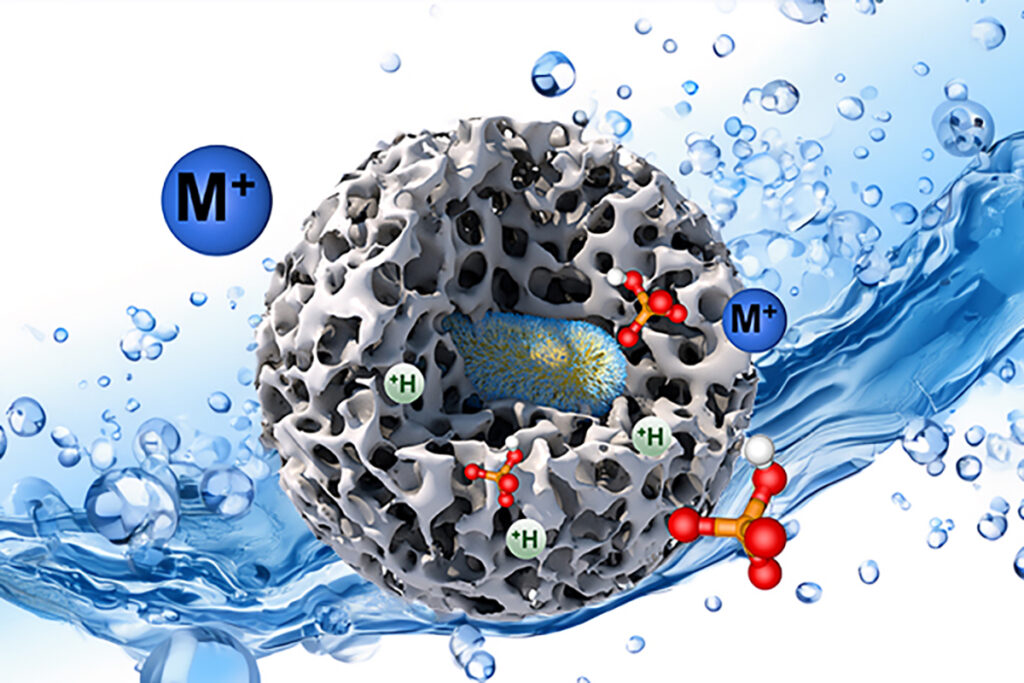
Natural and engineered systems have a whole world of chemistry inside their tiny pores — known as nanopores — that changes depending on the chemical functional groups inside. A team of chemical engineers and materials scientists in the McKelvey School of Engineering at Washington University in St. Louis have found a way to precisely control contaminants in nanopores that would ultimately benefit desalination techniques used in water treatment; carbon dioxide storage; and porous catalysts used in other manufacturing processes.
Young-Shin Jun, a professor of energy, environmental and chemical engineering, and Srikanth Singamaneni, the Lilyan & E. Lisle Hughes Professor in the Department of Mechanical Engineering and Materials Science, and their teams have published results of research that sheds light on how chemical functional groups influence the concentration of ions and pH inside nanopores. Singamaneni’s lab created a plasmonic nanosensor to measure concentrations of protons and ion contaminants in nanopores. The nanosensor provided information about ion-nanopore interactions that tells the researchers how certain contaminants are precisely and selectively controlled.
Research results were published online in ACS Applied Materials & Interfaces April 29. Read more on the McKelvey Engineering website.


